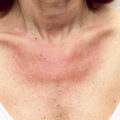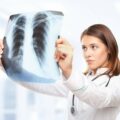Opportunistic infections in HIV and AIDS. List of the most dangerous complications and diseases
With HIV, a weakened immune system becomes very vulnerable to a number of opportunistic infections, oncology and other diseases. Such diseases are sometimes called “AIDS-defining” diseases. If a person has one of these conditions, the HIV infection is considered to have progressed to stage 3 HIV (AIDS), regardless of the number of CD4 cells in the blood.
This article will discuss the main opportunistic infections and diseases associated with HIV and AIDS. Knowing the possible health risks is the first step to protecting yourself from them.
Opportunistic infections in HIV
Candidiasis
Candidiasis includes a series of infections on various parts of human organs caused by Candida , a genus of fungi. These infections include thrush and vaginitis. A fungal infection is considered to define AIDS when it is detected in the esophagus, bronchi, trachea or lungs.
Powerful and sometimes quite toxic antifungal drugs are used to treat candidiasis. If candidiasis is detected, your doctor will prescribe specific medications depending on the area of infection.
Cryptococcal meningitis
Cryptococcus is a common fungus found in soil and bird droppings. Some varieties also grow in areas surrounding trees, and one variety particularly prefers eucalyptus trees. If inhaled, cryptococcus can cause meningitis. This is an infection of the lining of the brain and spinal cord.
Very strong (and quite often toxic) antifungal drugs are used for the initial treatment of cryptococcal meningitis. However, this disease can be fatal, so it must be treated promptly. Long-term suppressive therapy is often used with slightly less toxic medications for people with HIV.
Cryptosporidiosis
A tiny parasite that lives in the intestines of people and animals is responsible for cryptosporidiosis. Most people get sick from drinking contaminated water or eating contaminated food.
Cryptosporidiosis is just a nasty diarrheal disease for healthy people. However, in people who are HIV positive, it may last longer and cause more severe symptoms.
Cytomegalovirus
Cytomegalovirus (CMV) is most often considered a virus that causes serious eye disease in people with weakened immune systems. This can lead to blindness. CMV can also lead to diseases in other areas of the body, such as the digestive tract and parts of the nervous system.
There are currently no medications to treat CMV. However, a number of powerful antiviral drugs can cure this infection. For people with severely weakened immune systems, CMV drugs often need to be taken in large dosages for a long time.
However, damage from CMV infection may be slowed with the use of antiretroviral therapy. This may result in immune system recovery (as evidenced by a clinically significant increase in CD4 count). Anti-CMV therapy could potentially be changed to suppressive therapies that are easier on the body.
Herpes
Herpes simplex virus (HSV) is characterized by sores in the mouth, lips and genitals. Anyone can get herpes, but people with HIV experience an increased frequency and severity of outbreaks.
There is no cure for completely getting rid of herpes. However, relatively easy to tolerate medications taken over a long period of time can relieve symptoms of the virus.
Pneumocystis pneumonia
Pneumocystis pneumonia (pneumocystis) is a fungal pneumonia that can be fatal if not diagnosed and treated early. Pneumocystis is treated with antibiotics. The risk of HIV-infected people developing pneumocystis is so great that prophylactic antibiotic therapy must be used if the CD4 count falls below 200 cells per microliter (cells/μL).
Salmonella septicemia
Commonly referred to as “food poisoning,” salmonellosis is a bacterial infection of the intestines. The bacteria are most often transmitted through food or water contaminated with feces from sick animals.
People with HIV are at least 20 times more likely to get salmonellosis than healthy people. Salmonellosis can penetrate the blood, joints and organs. Antibiotics are usually prescribed to treat this infection.
Toxoplasmosis
Toxoplasmosis is caused by parasites in contaminated food. The disease can also be contracted from cat feces.
The risk of illness from toxoplasmosis infection increases substantially when the CD4 count falls below 100 cells/µL. An HIV-positive person should ideally avoid any contact with cat feces or any other source of exposure to toxoplasmosis.
People with a severely weakened immune system (less than or equal to 100 CD4 cells/µL) should receive the same prophylactic antibiotic therapy as for pneumocystis.
Toxoplasmosis is treated with antimicrobial drugs such as trimethoprim-sulfamethoxazole (Bactrim).
Tuberculosis
Tuberculosis may seem like a disease of the past, but it is actually a very common cause of death for people with HIV. Tuberculosis is caused by the bacteria Mycobacterium tuberculosis and is spread through the air. Tuberculosis usually affects the lungs and has two forms: latent tuberculosis and active tuberculosis.
People with HIV are more likely to get tuberculosis. The disease is treated for six to nine months using a combination of several drugs.
Both latent and active tuberculosis can be treated, but left untreated it can cause death.
Opportunistic cancer
Invasive cervical cancer
Cervical cancer begins in the cells lining the cervix. The cervix is located between the uterus and vagina. Cervical cancer is known to be caused by the human papillomavirus (HPV). Transmission of this virus is extremely common among all sexually active women. But studies have shown that the risk of contracting HPV increases significantly as HIV progresses.
For this reason, HIV-infected women should undergo regular examinations and visit a gynecologist.
Cervical cancer is considered invasive when it has spread beyond the cervix. Treatment options include surgery, radiation therapy, or chemotherapy.
Kaposi's sarcoma
Kaposi's sarcoma is associated with infection with a virus called human herpes virus 8 (HHV-8). It causes cancerous tumors of the body's connective tissue. Dark, purple skin lesions are Kaposi's sarcoma.
There is no cure for Kaposi's sarcoma, but its symptoms often improve or disappear completely with antiretroviral therapy. A number of other treatment methods are also used to treat this disease. These include radiation therapy, intrarenal chemotherapy, systemic chemotherapy, and retinoids.
Non-Hodgkin's lymphoma
Non-Hodgkin lymphoma (NHL) is a cancer of lymphocytes, cells that are part of the immune system. Lymphocytes are found throughout the body in places such as the lymph nodes, digestive tract, bone marrow and spleen.
Various types of treatment are used for NHL, including chemotherapy, radiation therapy, and stem cell transplantation.
Prevention of opportunistic infections in HIV
For those living with HIV, illness or new symptoms require an immediate visit to the doctor. However, some infections can be avoided by following basic guidelines. Prevention of opportunistic infections and diseases associated with HIV includes the following rules:
- do not neglect antiretroviral therapy;
- take recommended preventative medications and get vaccinated;
- use condoms during sex;
- Avoid direct contact with feces from cats and other pets;
- use latex gloves when changing baby diapers that contain feces;
- avoid people who suffer from the contagious infections listed in the article;
- Don't eat raw meat and shellfish, unwashed fruits and vegetables, or unpasteurized dairy products;
- Wash your hands and any objects that come into contact with raw meat, poultry or fish;
- do not drink water from reservoirs;
- Do not share towels or personal hygiene items.




